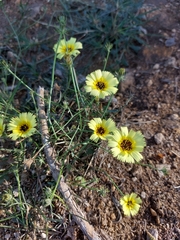Common vetch
Vicia sativa
Vicia sativa, commonly known as the common vetch or in Spanish as "veza común," is a species within the Fabaceae family. This herbaceous plant is native to Europe, Northwestern Africa, and Western Asia, but has been widely spread and cultivated in many other regions, including the Comunidad Valenciana.
Recognizable by its slender, climbing habit, Vicia sativa is typically found in grassy fields, roadsides, and cultivated lands. It is a favored species for its ability to improve soil fertility due to its nitrogen-fixing properties, making it a beneficial cover crop.
- Leaves: The plant features pinnate leaves with 4-8 pairs of narrow, elliptical leaflets, ending in tendrils that help it latch onto other structures or plants for support.
- Flowers: Its flowers are usually purple or pink and appear in late spring to early summer. They are borne singly or in pairs in the leaf axils.
- Fruit: After flowering, Vicia sativa produces pod-like fruits that contain several seeds, which can be used as fodder for animals.
- Usage: Aside from improving soil fertility, it is often used as animal feed due to its high protein content.
Common vetch is a valuable plant in agricultural practices and local ecosystems, providing various environmental benefits and supporting biodiversity. Its presence in the Comunidad Valenciana highlights the region's rich natural tapestry and its adaptability to different environments.







